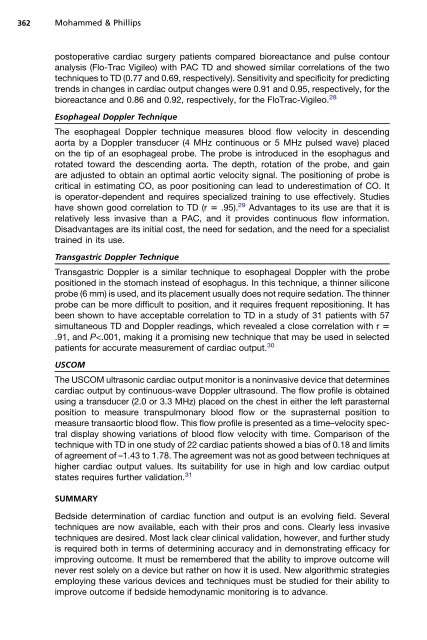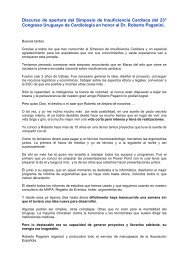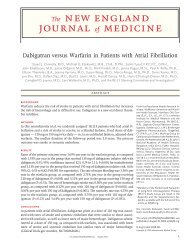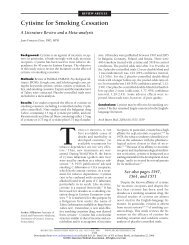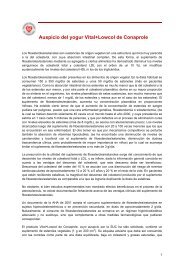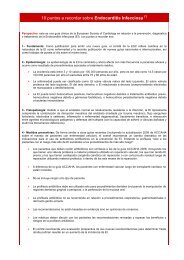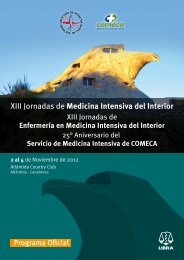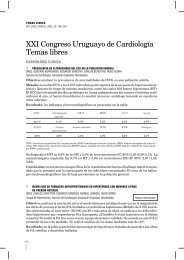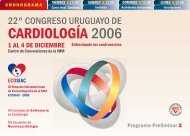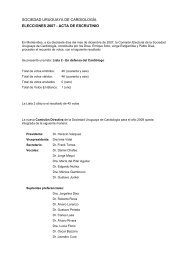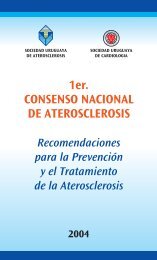Techniques for Determining Cardiac Output in the Intensive Care Unit
Techniques for Determining Cardiac Output in the Intensive Care Unit
Techniques for Determining Cardiac Output in the Intensive Care Unit
Create successful ePaper yourself
Turn your PDF publications into a flip-book with our unique Google optimized e-Paper software.
362<br />
Mohammed & Phillips<br />
postoperative cardiac surgery patients compared bioreactance and pulse contour<br />
analysis (Flo-Trac Vigileo) with PAC TD and showed similar correlations of <strong>the</strong> two<br />
techniques to TD (0.77 and 0.69, respectively). Sensitivity and specificity <strong>for</strong> predict<strong>in</strong>g<br />
trends <strong>in</strong> changes <strong>in</strong> cardiac output changes were 0.91 and 0.95, respectively, <strong>for</strong> <strong>the</strong><br />
bioreactance and 0.86 and 0.92, respectively, <strong>for</strong> <strong>the</strong> FloTrac-Vigileo. 28<br />
Esophageal Doppler Technique<br />
The esophageal Doppler technique measures blood flow velocity <strong>in</strong> descend<strong>in</strong>g<br />
aorta by a Doppler transducer (4 MHz cont<strong>in</strong>uous or 5 MHz pulsed wave) placed<br />
on <strong>the</strong> tip of an esophageal probe. The probe is <strong>in</strong>troduced <strong>in</strong> <strong>the</strong> esophagus and<br />
rotated toward <strong>the</strong> descend<strong>in</strong>g aorta. The depth, rotation of <strong>the</strong> probe, and ga<strong>in</strong><br />
are adjusted to obta<strong>in</strong> an optimal aortic velocity signal. The position<strong>in</strong>g of probe is<br />
critical <strong>in</strong> estimat<strong>in</strong>g CO, as poor position<strong>in</strong>g can lead to underestimation of CO. It<br />
is operator-dependent and requires specialized tra<strong>in</strong><strong>in</strong>g to use effectively. Studies<br />
have shown good correlation to TD (r 5 .95). 29 Advantages to its use are that it is<br />
relatively less <strong>in</strong>vasive than a PAC, and it provides cont<strong>in</strong>uous flow <strong>in</strong><strong>for</strong>mation.<br />
Disadvantages are its <strong>in</strong>itial cost, <strong>the</strong> need <strong>for</strong> sedation, and <strong>the</strong> need <strong>for</strong> a specialist<br />
tra<strong>in</strong>ed <strong>in</strong> its use.<br />
Transgastric Doppler Technique<br />
Transgastric Doppler is a similar technique to esophageal Doppler with <strong>the</strong> probe<br />
positioned <strong>in</strong> <strong>the</strong> stomach <strong>in</strong>stead of esophagus. In this technique, a th<strong>in</strong>ner silicone<br />
probe (6 mm) is used, and its placement usually does not require sedation. The th<strong>in</strong>ner<br />
probe can be more difficult to position, and it requires frequent reposition<strong>in</strong>g. It has<br />
been shown to have acceptable correlation to TD <strong>in</strong> a study of 31 patients with 57<br />
simultaneous TD and Doppler read<strong>in</strong>gs, which revealed a close correlation with r 5<br />
.91, and P


